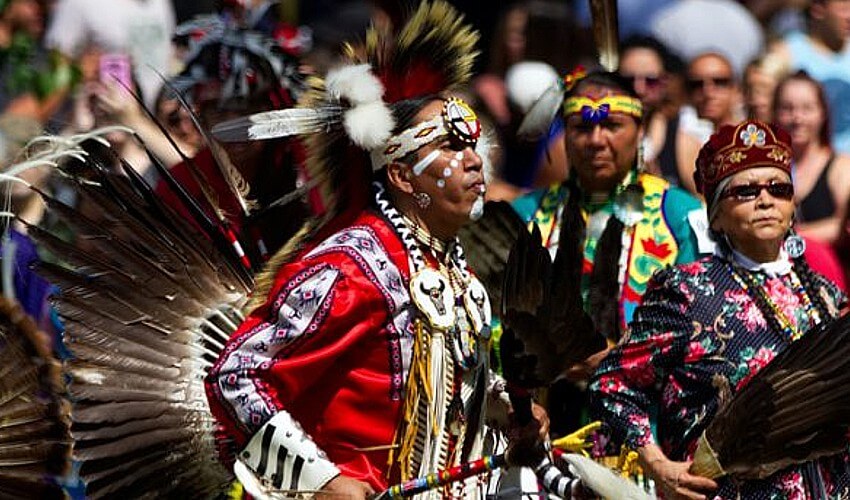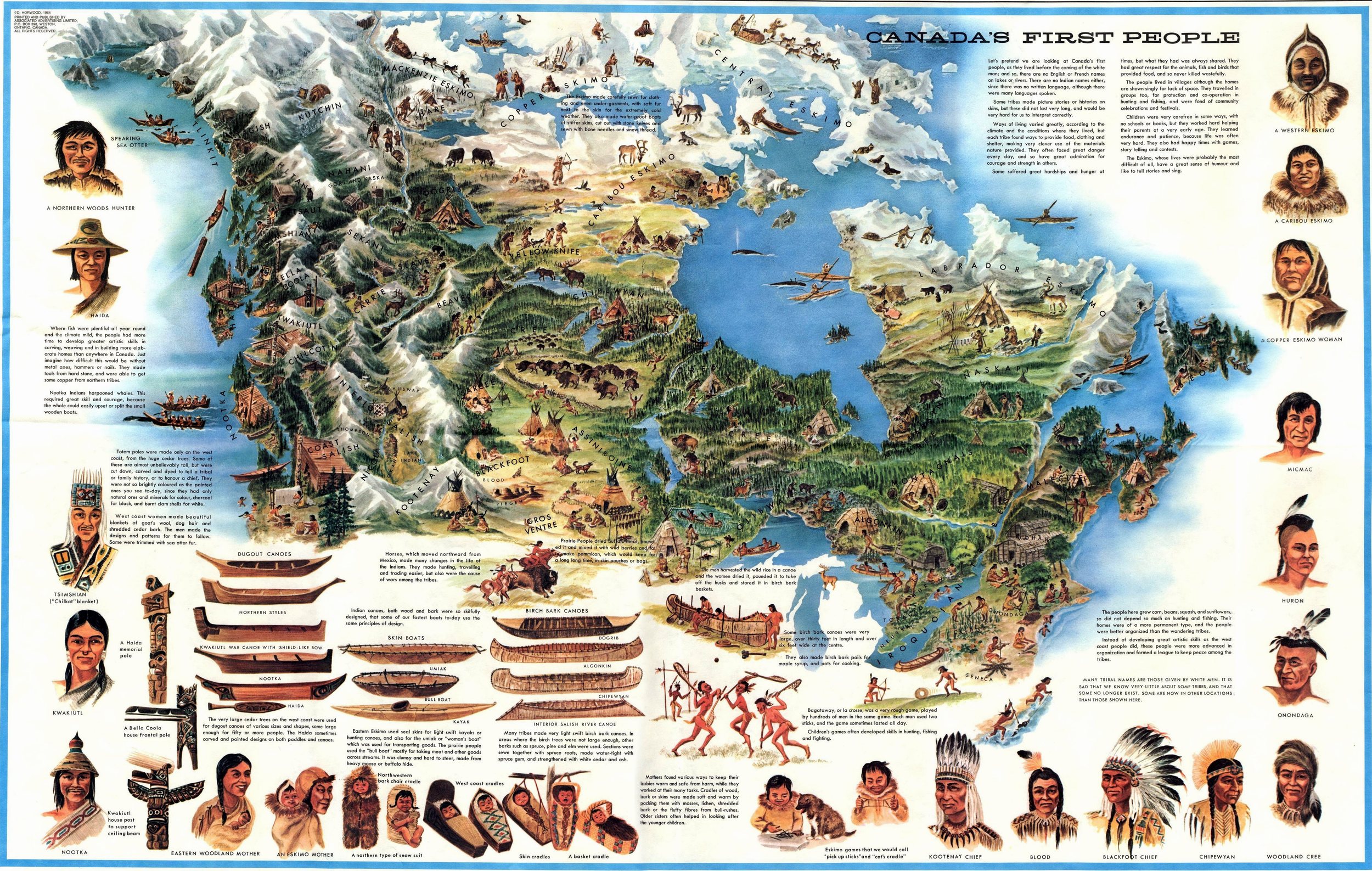A Tapestry of Nations: Exploring the Rich History and Culture of Ontario’s Indigenous Peoples
A Tapestry of Nations: Exploring the Rich History and Culture of Ontario’s Indigenous Peoples

Ontario, a province renowned for its natural beauty and vibrant cities, holds within its borders a rich and diverse tapestry of Indigenous cultures. For millennia, these First Nations, Métis, and Inuit communities have called this land home, contributing significantly to the province’s history, language, and traditions. This article delves into the fascinating world of Ontario’s Indigenous Peoples, exploring their unique identities, historical struggles, and ongoing contributions to the province’s cultural landscape.
A History Woven with Resilience
Related Articles: A Tapestry of Nations: Exploring the Rich History and Culture of Ontario’s Indigenous Peoples
- Journey Through Time: Unraveling the Enigma of Siberian Yupik History
- Shell-a-cool: Epic Turtle Tattoos for Guys!
- Savor the Flavors of Pueblo: Delectable World of Authentic Pueblo Food!
- Apache Raids: Unleashing the Wild West Fury!
- Unlock the Secrets of the Sioux Tongue: A Native American Adventure
The story of Ontario’s Indigenous Peoples begins long before European arrival. For thousands of years, diverse nations thrived across the land, each with its own language, customs, and spiritual connection to the earth. The Anishinaabe, Haudenosaunee, and Algonquin nations are just a few examples of the many Indigenous communities that have called Ontario home for generations. Their history is a testament to resilience, adaptation, and a deep understanding of the natural world.
The Impact of Colonization
The arrival of European settlers in the 17th century marked a significant turning point in the lives of Ontario’s Indigenous Peoples. The fur trade, coupled with the introduction of European diseases, had a devastating impact on Indigenous populations. The displacement of Indigenous communities from their traditional territories, the imposition of treaties, and the establishment of residential schools aimed at assimilating Indigenous children into European culture further compounded their struggles.
Treaties and Land Claims
The relationship between Indigenous Peoples and the Canadian government is marked by a complex web of treaties and land claims. These agreements, often negotiated under duress, have played a significant role in shaping the landscape of Ontario. While some treaties have provided Indigenous communities with certain rights and protections, others have been the subject of ongoing disputes and litigation.
Cultural Revitalization and Modern Challenges
Despite the challenges they have faced, Ontario’s Indigenous Peoples have demonstrated remarkable resilience and a strong commitment to cultural revitalization. In recent decades, there has been a growing movement to reclaim and celebrate Indigenous languages, traditions, and artistic expressions. This resurgence is evident in the increasing number of Indigenous-led organizations, cultural festivals, and educational initiatives across the province.
First Nations in Ontario

Ontario is home to numerous First Nations communities, each with its own unique history, language, and cultural practices. Some of the prominent First Nations in the province include:
- Anishinaabe: This large language group, encompassing several distinct nations, has a long and rich history in Ontario. The Anishinaabe are known for their intricate beadwork, storytelling, and traditional ceremonies.
- Haudenosaunee: Also known as the Iroquois Confederacy, the Haudenosaunee are a powerful and influential nation with a strong political structure. Their influence extends beyond Ontario, and their traditional territories span across several states in the United States.
- Algonquin: The Algonquin people have inhabited Ontario’s vast forests and waterways for centuries. They are known for their skilled hunters and gatherers, as well as their intricate knowledge of the natural world.
- Ojibwe: The Ojibwe, a distinct nation within the Anishinaabe language group, have a strong presence in northern Ontario. They are known for their traditional medicine practices, storytelling, and intricate birchbark art.
- Mohawk: The Mohawk people, part of the Haudenosaunee Confederacy, have a significant presence in southern Ontario. They are known for their warrior spirit, their commitment to traditional governance, and their contributions to the Canadian military.
- Cree: While primarily located in western Canada, the Cree people have a presence in northern Ontario, particularly around James Bay. They are known for their skilled hunters and trappers, as well as their traditional ceremonies and storytelling.

Métis in Ontario

The Métis people, a distinct Indigenous group, emerged from the historical interactions between First Nations and European fur traders. Their unique culture blends elements of both Indigenous and European traditions. In Ontario, Métis communities are located primarily in the northwestern region of the province.
Inuit in Ontario
While the majority of Inuit communities are located in the northern territories, there is a small but significant Inuit presence in Ontario’s far north. The Inuit people are renowned for their resilience, their deep connection to the Arctic environment, and their unique artistic traditions.
Contemporary Challenges and Opportunities
Despite the progress made in recent years, Ontario’s Indigenous Peoples continue to face significant challenges. Issues such as poverty, lack of access to adequate healthcare and education, and the ongoing legacy of colonialism continue to impact Indigenous communities.
However, there is also a growing sense of hope and optimism. Indigenous communities are actively working to address these challenges, advocating for self-determination, economic development, and cultural revitalization. Through education, cultural awareness, and community engagement, Ontario can foster a more equitable and inclusive society where Indigenous voices are heard and valued.
Conclusion
Ontario’s Indigenous Peoples are an integral part of the province’s history, culture, and identity. Their resilience, their cultural contributions, and their ongoing struggle for self-determination are essential to understanding the province’s past, present, and future. By embracing the rich tapestry of Indigenous cultures, we can foster a society that honors the past, celebrates the present, and builds a brighter future for all.
FAQ about Native American Tribes in Ontario Canada
1. What are the main Indigenous groups in Ontario?
Ontario is home to First Nations, Métis, and Inuit communities. The First Nations groups include the Anishinaabe, Haudenosaunee, Algonquin, Ojibwe, Mohawk, and Cree.
2. How many Indigenous people live in Ontario?
According to the 2021 Canadian Census, there are over 300,000 Indigenous people living in Ontario.
3. What are some of the challenges faced by Indigenous communities in Ontario?
Indigenous communities in Ontario face challenges such as poverty, lack of access to healthcare and education, and the ongoing legacy of colonialism.
4. What is the role of treaties in the relationship between Indigenous Peoples and the Canadian government?
Treaties have played a significant role in shaping the relationship between Indigenous Peoples and the Canadian government. However, many treaties have been the subject of disputes and litigation.
5. What are some ways to learn more about Ontario’s Indigenous cultures?
There are many ways to learn more about Ontario’s Indigenous cultures. You can visit museums, attend cultural events, read books and articles, and connect with Indigenous communities.
6. How can I support Indigenous communities in Ontario?
You can support Indigenous communities by educating yourself about their cultures, supporting Indigenous-owned businesses, and advocating for policies that promote Indigenous rights and self-determination.
7. What is the difference between First Nations, Métis, and Inuit?
First Nations are Indigenous peoples who are recognized by the Canadian government as having distinct legal rights and status. Métis are a distinct Indigenous group who emerged from the historical interactions between First Nations and European fur traders. Inuit are Indigenous peoples who have traditionally lived in the Arctic regions of Canada.
8. What is the significance of the Truth and Reconciliation Commission?
The Truth and Reconciliation Commission was established to investigate the history of residential schools in Canada. The Commission’s final report, released in 2015, documented the devastating impact of residential schools on Indigenous communities and called for action to address the legacy of colonialism.
9. What is the importance of Indigenous languages?
Indigenous languages are essential to the cultural identity of Indigenous peoples. They are a vital part of their traditions, stories, and knowledge systems.
10. What are some examples of Indigenous art and culture in Ontario?
Ontario is home to a vibrant Indigenous arts scene. Some examples include beadwork, birchbark art, traditional drumming and dancing, and contemporary Indigenous art.

Closure
Thus, we hope this article has provided valuable insights into A Tapestry of Nations: Exploring the Rich History and Culture of Ontario’s Indigenous Peoples. We thank you for taking the time to read this article. See you in our next article!